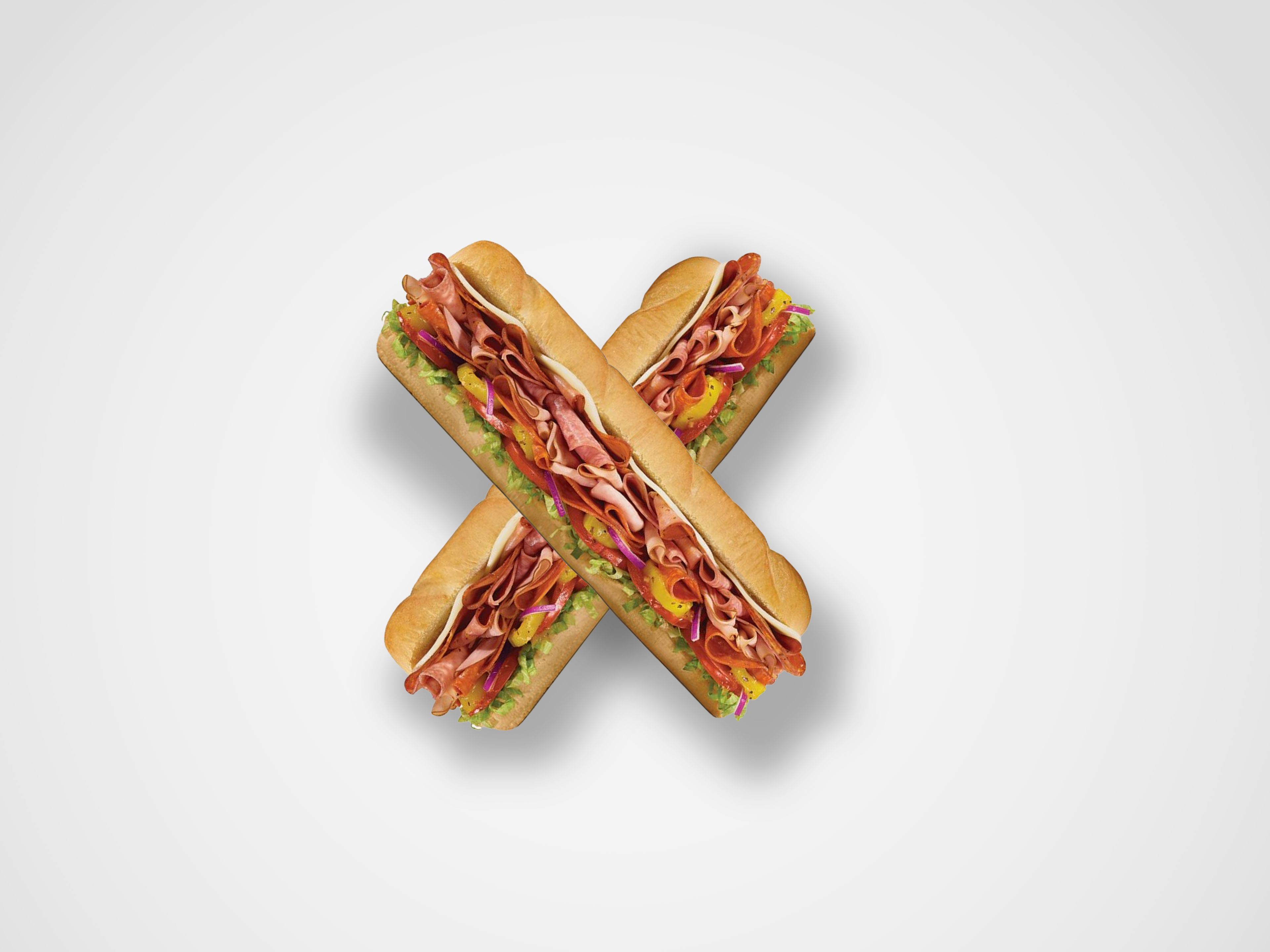The Pendulum Swings Back to Brand

Traction's Neil Cohen authored a blog post on how "The Pendulum Swings Back to Brand" in a prestigious Scandinavian trends journal, TID & Tendenser.
After years of dominating the mix, marketers reconsider performance marketing.
From its earliest days, the internet brought with it the promise of a bonanza for marketers. No longer would you have to broadcast to hundreds of millions of people to find your customer. On the internet, you could find the right customer and target them explicitly, making your marketing measurable down to the penny.
With the advent over the past 10 years of sophisticated marketing technologies that automate and analyse every phase of a customer’s digital journey, the promise came to life. Growth hacking became the industry buzzword and marketers with a knack for analytics and data ruled the roost, becoming the highest in demand set of skills in the industry. Measurement, analytics and ROI became the mantra from the C-suite to justify any and all marketing spend.
The movement was so prevalent, it frequently created marketing silos within companies: Brand, driven by emotion and customer empathy, and performance marketing, focused exclusively on optimisation and ROI. And when times got tight, branding budgets got cut, while performance marketing received the lion’s share of the remaining budget.
Decline in performance marketing
Recently, things began to change, and it was not subtle – the performance of performance marketing began to decline, and dramatically so. The decline correlates directly with a number of distinct changes in governance and digital publishing, including:
- Privacy laws - Around the world, governments have passed stringent personal data and privacy protections that limit what can be used for targeting audiences.
- IDFA and Cookie deprecation - Cookies have been nearly eliminated, hampering the ability to track audience behavior.
- Algorithm changes - Major advertising platforms like Meta and Google have adjusted their formula for targeting audiences to comply with new restrictions.
- Loss of efficiency due to rising costs - Digital advertising is more expensive and therefore, each dollar spent reaches a smaller audience.
“A number of years ago, we could inexpensively reach our desired audiences through cookies (a digital tag that identifies you) and other website or app data. It was very effective in generating traffic, and more importantly, clicks that turned into revenue,” said Brian Hovis, who has led performance marketing at companies like Citi, Experian and Nordstrom. “That is all gone away. New stringent privacy laws and the end of cookies has made it not just more challenging to reach your audience, but exponentially more expensive.”
To renowned marketing expert Babs Rangaiah, it is a welcome, and more importantly, effective shift:
“The best brands in the world are learning that while performance marketing is a good thing to have, nothing beats the ability to connect with your customers on an emotional level.”
According to Babs Rangaiah, who has lead marketing efforts for some of the world’s biggest brands, companies need to master the ability to penetrate culture in real time:
“It is not just having empathy and understanding of your customers that is critical, it is also the ability to tap into the zeitgeist of the moment,” he said.
“For brands that want to be successful it is about understanding how to be culturally relevant.”
"It is not just having empathy and understanding of your customers that is critical, it is also the ability to tap into the zeitgeist of the moment."
Babs RangaiahTraction Consultant
Babs Rangaiah cites Aviation Gin as a preeminent example. Just a few years ago, they were able to capitalise on the kerfuffle over a Peloton ad in which a husband bought his wife a Peloton for the holidays so she could get in shape (guys – do not try this at home – it will not go well). Within two days, Aviation, led by the wit and brilliance of its owner, actor and entrepreneur Ryan Reynolds, had the female star of that ad slinging back Aviation Gin Martinis on girls’ night out. How well did it work? The instantly viral video created a buzz that not only led to an increase in sales, Aviation was soon able to sell to spirit industry giant Diageo for 610 million dollars.
“You do not get that kind of valuation from performance marketing alone,” he added.
A more recent example is the production and launch of the new Barbie movie. The cynical among us could see it as just a way for Mattel to sell more toy dolls. Yet, Barbie’s brand stewards understood that she has been an important cultural touchpoint for almost three generations of women, and yes, men. They allowed the director, Greta Gerwig, and the writers an unprecedented and surprising amount of creative freedom, with the screenplay touching on hot button issues of women’s empowerment and female self-determination.
They even allowed the director to introduce failed characters (line extensions of the toys that did not catch on) into the story mix, which created surprise and delight among the audiences that enjoyed the brand not taking itself too seriously. They partnered with networks like HGTV to create compelling, entertaining competitions among the channel’s stars, putting their spin on creating Barbie living spaces inspired by each decade of Barbie’s lifespan.
Of course, they renovated the essential Barbie Dream House on AirBnB and attached a contest to it. By focusing on Barbie as a cultural icon, Mattel was able to create marketing that was authentic, entertaining and effective – at the time of this writing, more than one billion dollars and rising box office across the globe, almost double the expectations. Barbie’s proprietary pink is now as ubiquitous as Coca Cola’s red and Barbiecore, the name for Barbie fashion fandom, has never been more impactful and relevant in its 64-year history.
A strong brand supersedes a performance approach
These results are not surprising to Brian Hovis, who sees today’s performance marketing as a commodity.
“Everyone has access to the same tools and analytics. And while there is variation in the ability to execute, most will get similar results and ROI – so in essence, there is nothing to differentiate who you are or why people should care,” Brian Hovis said. “The only thing that companies have at that point to differentiate themselves is their brand.”
Brian Hovis believes in the new approach so deeply, that he and his wife Marlo co-founded Hypeach, a new fashion brand that targets Gen Z with a very forward, cutting edge approach to fashion. Marlo Hovis, who is CEO and Chief Product Officer, had the idea to create a clothing line that directly taps into the fashion influencer community to create the clothing line and then amplify those creations across TikTok, Instagram and other high traffic social apps.
"Nothing creates relevance like being in touch and on trend with what is going on with the grassroots."
Brian HovisHead of Peformance Marketing
The company collaborates directly with these influencers to develop one-a-kind items with limited production runs, proudly touting on their ecommerce site new ‘drops’ every week. This ensures the fashion is always fresh and edgy and brings fans back over and over again to see what is new and hot. At the brick-and-mortar location in trendy West Hollywood, they have created a fashion Instagrammer’s paradise that drives visits and excitement. Early returns are quite strong, with new items selling out on a regular basis.
Brian Hovis notes that, not surprisingly, this new differentiated brand excels at performance marketing.
“Nothing creates relevance like being in touch and on trend with what is going on with the grassroots,” said Brian Hovis. “Combining a distinctive brand with a solid performance marketing program and you will win the battle for eyeballs and customer conversion and ongoing loyalty.”
"... building this foundational, emotional connection with our customers created real equity in the brand."
Lauren EvansDirector of Client Services
Marketing leaders like Lauren Evans, who was a key part of growing Lululemon from a 500-million-dollar brand to six-billion-dollar brand, agree that a strong brand supersedes a performance approach to driving business. For the first half of her nine-year tenure with the brand, Lululemon did not buy media or advertise until they exceeded four billion dollars in revenue. Instead, they focused on experiences, influencers, great store service and their unique take on yoga and athletic leisure fashion that created a cult following for comfort, functionality and design. The formula was not only successful, it achieved the difficult goal of achieving cultural relevance as well as exponential growth.
“By talking to and understanding our ideal customer and focusing on what was important to them in regard to style and community, we were able to develop a devoted following that created viral and valuable word of mouth support for the brand,” Lauren Evans said. “While it was tempting to want to divert dollars to digital performance marketing, building this foundational, emotional connection with our customers created real equity in the brand, business and fueled growth. When we finally did start buying media it really worked well because people understood our brand and what it meant to them.”
The currencies of value
Adam Kleinberg, owner and CEO of Traction, an agency based out of San Francisco, sees brands beginning to adopt a more balanced, hybrid approach with their go-to-market strategies.
"You have to be able to seamlessly integrate yourself into how people go about their lives."
Adam KleinbergCEO
“For companies to really be successful, it has to be more Yin and Yang, a balance, rather than sacrificing one over the other,” Adam Kleinberg said, “The silos that were built up have to go away and companies need to reintegrate brand and performance.”
He believes that the integration of brand and performance begins with brands better understanding their customer’s journey – specifically, each and every step and touchpoint on how customers interact with that brand.
“Nobody wants your advertising, it is an unwanted interruption to whatever you might be trying to do,” Adam Kleinberg said. “You have to be able to seamlessly integrate yourself into how people go about their lives. The goal is to insert your brand in a relevant way into that journey to create value and utility.”
Essential to achieving that goal is understanding what Adam Kleinberg calls ‘currencies of value’ of your customers. He defines that as the thing that is important to them, the real pain point, and how your product or service can solve it in a way no one else can. Now, when a customer sees your ads, they react positively because it is relevant to them and their journey.
“Too often brands are always selling – it is always about them and the features and attributes of how great their product is,” Adam Kleinberg said, “Time and time again, we find our clients need to spend more time talking to and listening to their customers to understand their pain and uncover real insights to what moves them emotionally, making the story more about them and how their needs are met rather than it being all about how wonderful the product or service being sold is.”
According to Adam Kleinberg, once you understand the currencies of value, it becomes very straightforward for a brand to become relevant in the key parts of the customer journey and clearly demonstrates to the customer that you get them.
“Now, you are not advertising anymore – you are helping them solve a real problem that means something to them, and that builds loyalty, word of mouth and repeat purchases,” Adam Kleinberg said.
He cites an example from his agency’s work with Lenovo computers a few years back. The company had not really connected with IT professionals with their extremely durable laptop. Instead of selling the features of the product, Traction honed in on an insight learned from talking to IT pros – that company laptop users did unimaginable, horrible things to their devices that required significant repairs or outright replacement. The ‘users happen’ campaign that resulted from that insight resulted in a performance marketing campaign that created extraordinary results, creating positive brand awareness for Lenovo within the IT community, while dramatically increasing sales.
“That campaign is a perfect example of how brand and performance can work hand in hand to support each other,” Adam Kleinberg added. “It is a recipe for success that we see becoming more and more necessary.”
Storytelling is key to success
It is clear that more CMOs are looking to lean more into that recipe. In a recent survey from Kantar featured in Marketing Week, 80 percent of CMOs said they need to improve their creative and storytelling to improve the success of their campaigns. At the same time, almost 60 percent acknowledge they are struggling with performance marketing. Babs Rangaiah’s personal experience in talking with CMOs validates the survey results.
“I was just at the Cannes Lions advertising awards, which attracts the world’s top marketers and the chatter among all the CMOs was about how branding and cultural relevance is more needed than ever,” Babs Rangaiah said. “Look for this transition to a more hybrid, integrated and balanced approach to brand and performance to happen sooner than later.”
This article was originally published in Scandinavian trends journal TID & Tendenser.

Neil Cohen is the Strategy Director at Traction. He has more than 40 years of experience creating, building and managing brands from start-ups to Fortune 500 companies. As a “marketing therapist,” he works with companies to help them focus and "get out of their own way."

Last week, Traction hosted an insightful dinner in NYC for The Futureproof Project. We were honored to have Saul J. Berman, Ph.D. as our guest speaker for the evening.

Our CEO, Adam Kleinberg, in a recent interview on the SharkPreneur podcast.

Adam was asked for a comment in this MediaPost story about Subway’s “publicity stunt” ...